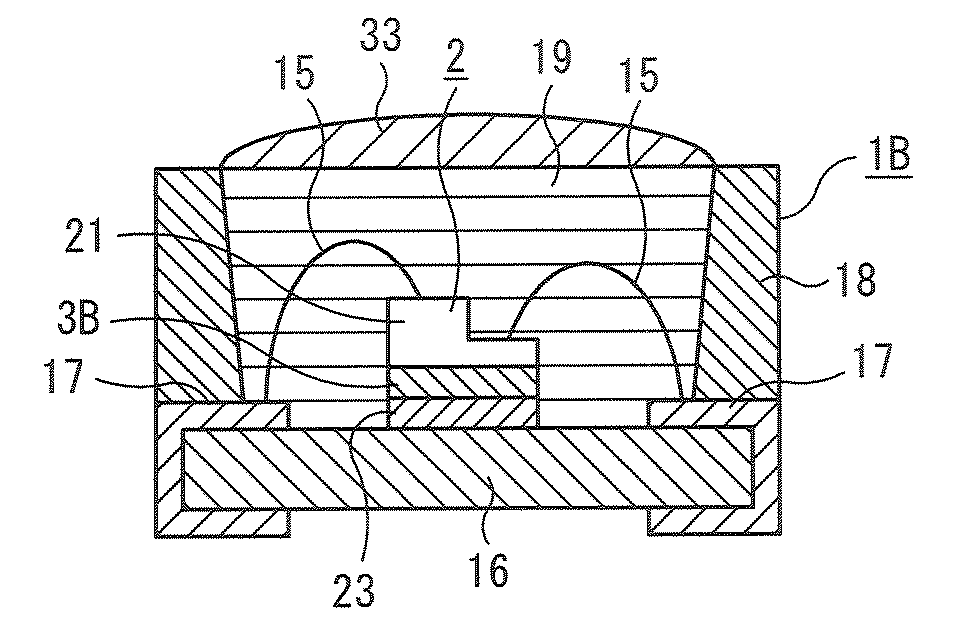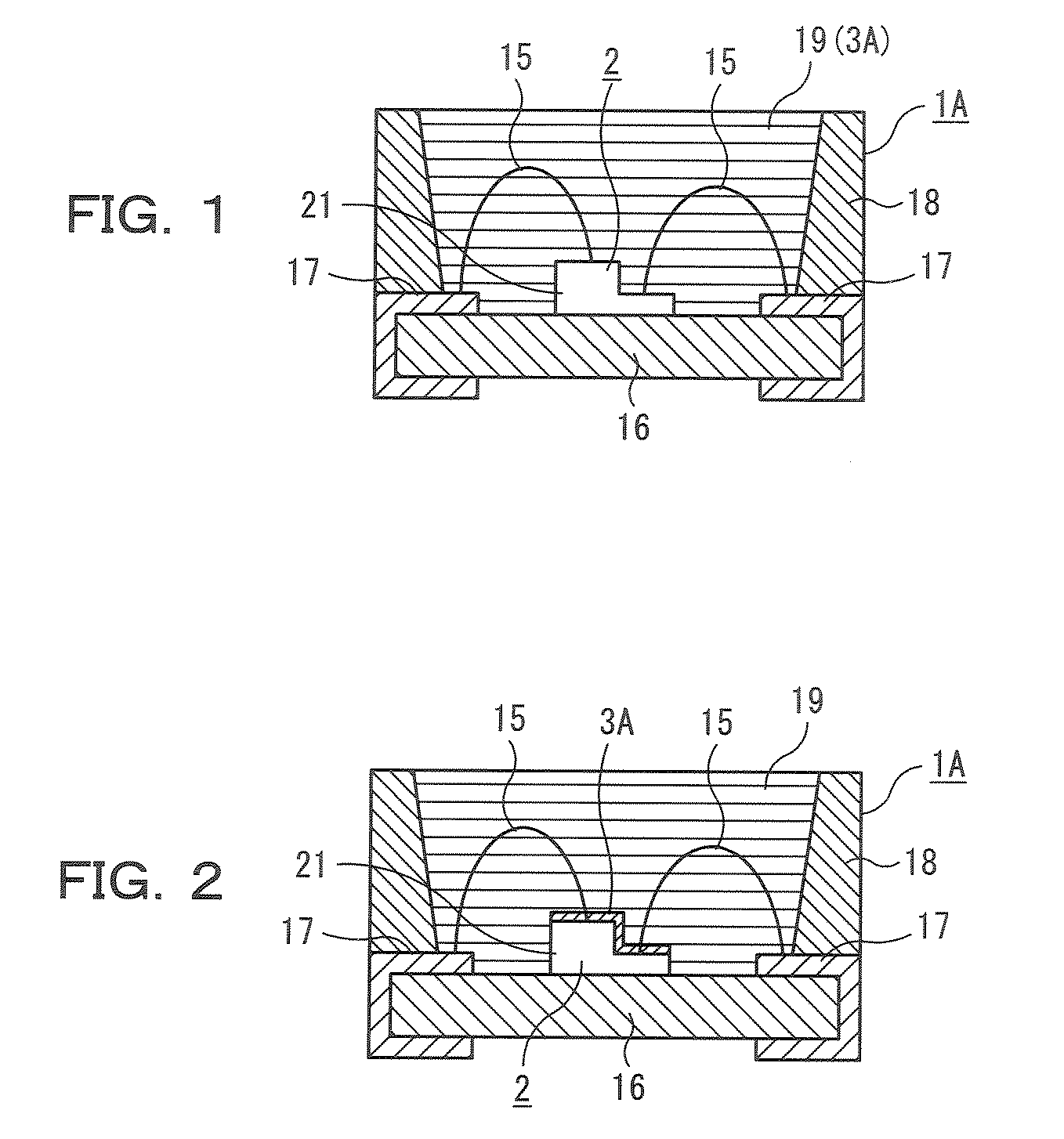Semiconductor Light Emitting Device Member, Method for Manufacturing Such Semiconductor Light Emitting Device Member and Semiconductor Light Emitting Device Using Such Semiconductor Light Emitting Device Member
- Summary
- Abstract
- Description
- Claims
- Application Information
AI Technical Summary
Benefits of technology
Problems solved by technology
Method used
Image
Examples
embodiment a-1
[0745]In the luminescent device 1A in the present embodiment, as shown in FIG. 1, the luminous element 2 is surface-mounted on an insulating substrate 16 on which printed wiring 17 is carried out. In the luminous element 2, a p-type semiconductor layer (not shown) and an n-type semiconductor layer (not shown) in a luminous layer part 21 are connected electrically to the printed wiring 17 and 17 via conductive wires 15 and 15 respectively. The conductive wires 15 and 15 have a small cross section so that light emitted from the luminous element 2 should not be blocked.
[0746]Any luminous element 2 that emits light of wavelengths from ultraviolet to infrared regions may be used, but here a gallium nitride LED chip is assumed to be used. In the luminous element 2, the n-type semiconductor layer (not shown) is formed on a lower side in FIG. 1 and the p-type semiconductor layer (not shown) is formed on an upper side, and the upper side of FIG. 1 is assumed to a front for a description belo...
embodiment a-2
[0750]The luminescent device 1A in the present embodiment is structured, as shown in FIG. 2, in the same manner as the above embodiment A-1 except that the front of the luminous element 2 is covered with the transparent member 3A and the sealing part 19 is formed thereupon with a material different from that of the transparent member 3A. The transparent member 3A on the surface of the luminous element 2 is a transparent thin film functioning as a light extracting film and sealing film and can be formed, for example, by coating the above semiconductor light-emitting device member formation liquid using a spin coating when a chip of the luminous element 2 is formed. Meanwhile, the same numeral is attached to the same component as in the embodiment A-1 to omit a description thereof.
[0751]Thus, like the embodiment A-1, the luminescent device 1A in the present embodiment is provided with the luminous element 2 and transparent member 3A, and thus light durability and heat resistance of th...
embodiment b-1
[0752]The luminescent device 1B in the present embodiment is provided, as shown in FIG. 3(a), with the luminous element 2 comprised of an LED chip and a mold part 11 obtained by forming a translucent transparent material into a cannonball shape. The mold part 11 covers the luminous element 2 and the luminous element 2 is electrically connected to lead terminals 12 and 13 formed of conductive material. The lead terminals 12 and 13 are formed of a lead frame.
[0753]In the luminous element 2, which is a gallium nitride LED chip, an n-type semiconductor layer (not shown) is formed on the lower side in FIG. 3(a) and a p-type semiconductor layer (not shown) is formed on the upper side, and the upper side of FIG. 3(a) and FIG. 3(b) is assumed to the front for a description below because light output is extracted from the p-type semiconductor layer side. A rear surface of the luminous element 2 is joined to a mirror (cup surface) 14 attached to a front end part of the lead by die bonding. Th...
PUM
| Property | Measurement | Unit |
|---|---|---|
| Temperature | aaaaa | aaaaa |
| Fraction | aaaaa | aaaaa |
| Fraction | aaaaa | aaaaa |
Abstract
Description
Claims
Application Information
 Login to View More
Login to View More - R&D
- Intellectual Property
- Life Sciences
- Materials
- Tech Scout
- Unparalleled Data Quality
- Higher Quality Content
- 60% Fewer Hallucinations
Browse by: Latest US Patents, China's latest patents, Technical Efficacy Thesaurus, Application Domain, Technology Topic, Popular Technical Reports.
© 2025 PatSnap. All rights reserved.Legal|Privacy policy|Modern Slavery Act Transparency Statement|Sitemap|About US| Contact US: help@patsnap.com



